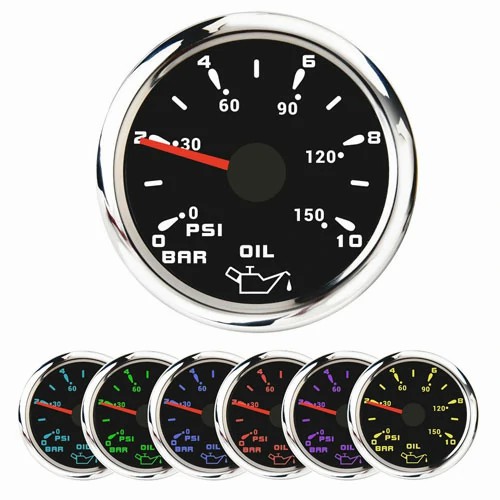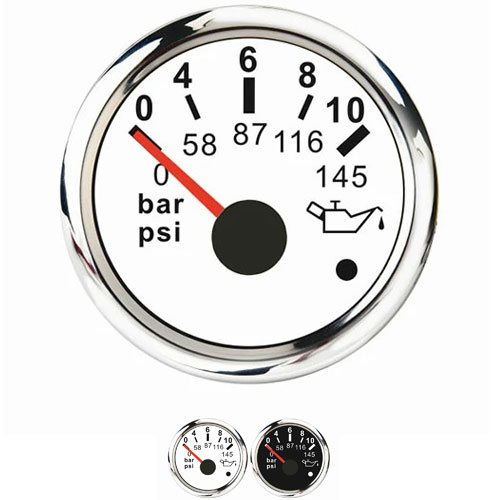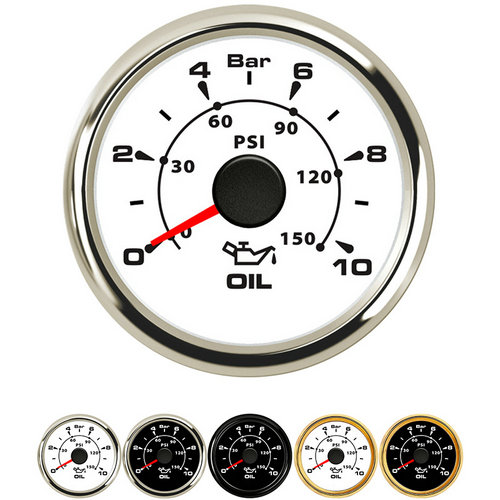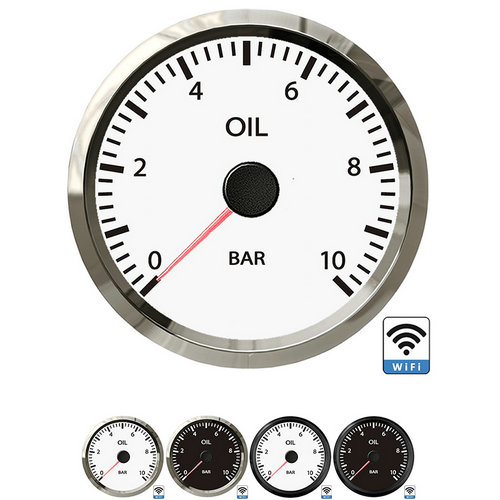high pressure oil gauge
Reasons for high oil pressure: first, the viscosity of the oil is too low; second, the oil filter or oil filter is clogged; third, the spring force of the pressure limiting valve and oil return valve is weakened or broken, or the joint surface of the valve is not tightly sealed, resulting in leakage. Oil pressure relief; Fourth, the main bearing or connecting rod bearing clearance is too large; Fifth, the oil pump is not working well.
The oil pressure sensor is usually installed in the main oil circuit. If the oil pressure gauge and oil pressure sensor are normal, and the oil pressure gauge indicates that the pressure is too low, the possible cause of the failure can be analyzed according to the composition of the lubrication system and the oil circuit. If the oil circuit is divided into front and rear parts by the oil pressure sensor according to the oil flow direction, the reasons for the low oil pressure can be divided into two aspects: one is that the oil circuit in front of the oil pressure sensor is not smooth (such as the filter is clogged) or the oil supply Insufficient (such as insufficient oil); second, the oil passage behind the oil pressure sensor drains oil too quickly (such as the crankshaft bearing clearance is too large). It can be roughly divided into the following reasons:
(1) The oil pressure gauge is faulty or the oil passage leading to the oil pressure gauge is blocked. Separately loosen the nuts or bolts that connect the oil line to the oil pressure gauge (the other end connects to the main oil passage). If the oil pressure is high, the pressure gauge is faulty or the oil line leading to the oil pressure gauge is blocked.
(2) The amount of oil is insufficient, the oil has deteriorated, or there is water in the oil. Regularly check the scale of the oil storage gauge on the oil sump, and add enough oil as required; check the cooperation between the piston ring and the cylinder liner, and repair it if the wear is serious.
(3) The oil brand is wrong, the viscosity is small, and the oil is too thin. Replace the engine oil with new oil that meets specifications.
(4) The diesel engine is overloaded for a long time, which makes the oil temperature too high and too thin. Reduce the load of the diesel engine, and do not allow long-term overload work.
(5) The oil filter is clogged, the oil intake is reduced, and the pressure is too low. Clean the oil filter.
(6) Oil stains, long-term use and deterioration, etc. , may clog the filter screen or oil passage of the oil suction pan. Replace the oil with new oil, and clean the filter screen and oil passage.
(7) After the oil pump is worn, the internal leakage of the oil pump will increase, the amount of oil in the pump will decrease, or the paper pad of the oil pump will be damaged and leak oil. Compensation can be made by reducing the thickness of the oil pump end cover gasket. If the pump oil volume is still insufficient, repair or replace worn parts and damaged gaskets.
(8) Check whether the spring of the pressure limiting valve is too soft and whether the valve is too worn. If the valve wear is normal, check whether the spring elasticity is insufficient.
(9) The assembly of the oil circuit from the oil suction plate to the oil pump is not tight, and there is air leakage, such as the hollow bolt of the oil suction pipe is not tightened, etc. Reinstall to eliminate air leaks.
(10) The lubricating parts such as main bearings, connecting rod bearings, camshafts, and bushings are worn, the gaps are enlarged, and the lubricating oil leaks too much. And repair and replace new parts, restore the matching relationship of spare parts, and make the gap within the normal range.
 English
English 






Get a Quote / Info